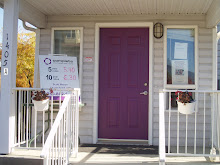OTTAWA - The Bank of Canada signaled Tuesday it is poised to start raising interest rates in a matter of weeks, a move that will make borrowing costs higher on everything from car loans to mortgages.
Over the last few weeks, Canadians have already felt the impact of expectations that rates were due to rise - most major Canadians banks started hiking fixed-rate mortgage rates by as much as 0.85 per cent.
But with the central bank now saying it is prepared to move off its emergency 0.25 per cent overnight rate as early as June 1, the whole menu of variable and short-term rates are being brought into play.
"The one that will be affected is the prime lending rate... so the whole gamut will go up when the Bank of Canada raises its rate," said Bank of Montreal economist Michael Gregory. Those include variable-rate mortgages, lines of credit and short-term car loans, he said.
The bank is also risking sending the Canadian dollar into the stratosphere by moving significantly and robustly before the U.S. Federal Reserve moves off its own zero per cent interest rate policy.
The loonie soared within minutes of the central bank's 9 a.m. ET policy statement, which, while leaving the rate unchanged for now, made no secret of where it is headed.
The bank's governing council declared that with the economy and inflation growing faster this year than had been previously thought, there was no need to stay with its "conditional commitment" to leave rates unchanged until the end of the second quarter, or after June 30.
"This unconventional policy provided considerable additional stimulus during a period of very weak economic conditions," the council wrote.
"With recent improvements in the economic outlook, the need for such extraordinary policy is now passing, and it is appropriate to begin to lessen the degree of monetary stimulus."
Hence, the council went on, it was withdrawing the conditional commitment.
The bank also said it was ending its key emergency lending instrument that helped inject liquidity into money markets during the crisis, which economists called a clear signal about the central bank's future intentions.
The dollar rose about 1.5 cents shortly afterwards, breaking through the parity ceiling with the U.S. greenback. It closed up 1.58 cents at 100.12 cents U.S.
The currency move suggested that while the market had expected bank governor Mark Carney to signal a tightening bias, it was surprised by the hawkish tone.
"Removing the conditional commitment to keep rates on hold until July and ending purchase and resale agreements are as good as cementing a June 1 hike," said economists Derek Holt and Karen Cordes Woods of Scotia Capital in a note to clients.
Holt added in an interview that the language from the bank opens the door for a bigger-than-expected hike in June, perhaps by as much as half a point.
Not all analysts believe the market is right to anticipate a June hike, however. Some say Carney is still leaving himself some wiggle room to stay at the lower bound until July 20, while others are advising the governor to wait until the Fed acts.
"I would keep rates unchanged until the Fed moves, because otherwise you create this problem on the Canadian dollar," said Brian Bethune, chief economist with IHS Global Insight.
A strong loonie is regarded as a brake on economic growth because it makes the price of Canadian exports less competitive in foreign markets.
In the statement, the central bank conceded the point, listing the "persistent strength of the Canadian dollar," along with poor productivity and low U.S. demand as "significant drags" on the Canadian economy.
But economists suggested the bank's language suggests it is prepared to live with a strong loonie.
Even so, economists that favoured a rate hike said the bank can only get so far ahead of the Fed. They note the Canadian bank has flown solo twice before in the past two decades, only to have to subsequently pull back.
"The need for emergency rates have passed but we still have a need for low rates," Holt explained.
C.D. Howe's monetary policy council, a sampling of nine economists, sees the bank's policy rate rising to 2.5 per cent by the spring of 2011. That is a significant hike from the current level, but it is still below what would be considered normal and only slightly above the rate of inflation.
While the tone on interest rates was hawkish, the bank's view on the economy was only mildly more rosy. It upgraded this year's growth to 3.7 per cent, from a previous prediction of 2.9 per cent, but it lowered its forecast for 2011 to 3.1 per cent, and it believes 2012 will only bring a 1.9 per cent advance.
It now expects the economy to return to full capacity in the spring of 2011, a full quarter before the previous estimate it made in January.
The bank did raise the temperature, slightly, on inflation.
It said core prices have been firmer than projected, but that they were expected to ease slightly in the second quarter of this year and remain near the bank's two per cent target over the next two years.
Total headline inflation, which includes volatile items such as gasoline prices, was expected to be higher than two per cent this year, but returning to target in the second half of 2011.


No comments:
Post a Comment